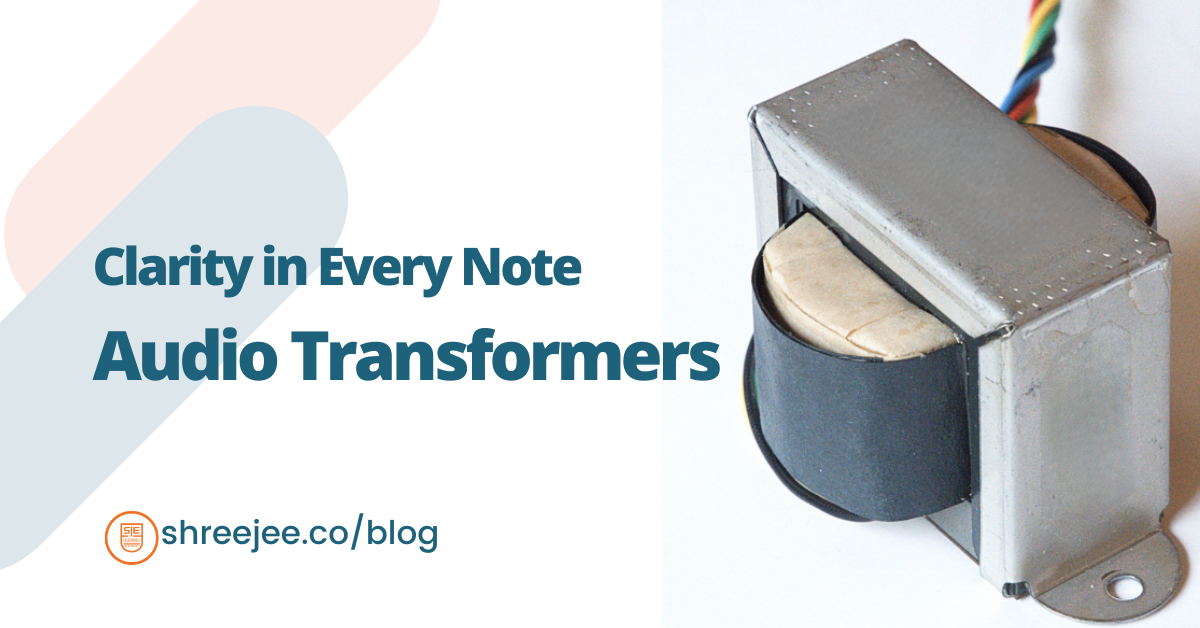In modern audio and communication systems, line-matching transformers ensure efficient power transfer and signal integrity. This transformer matches the impedance of the speaker(s) to the best load for the tube or transistor.
What is a Line Matching Transformer?
A line-matching transformer is designed to match a source’s impedance (the opposition to the flow of alternating current) to a load’s impedance, thereby maximizing power transfer and minimizing signal loss. Simply put, the transformer changes the speaker’s impedance to match the load of the output stage active element.
These transformers are crucial in applications where impedance mismatch can lead to inefficient power transfer and signal degradation.
Designing an Audio Transformer
Designing an audio transformer involves several key steps:
- Core Material Selection: The choice of core material significantly impacts the transformer’s efficiency and frequency response. Common materials include silicon steel and ferrite. Silicon steel has low core losses and high permeability, which makes it ideal for audio frequency applications.
- Design the primary and secondary windings carefully to achieve the desired impedance ratio. This involves calculating the number of turns and the wire gauge to ensure minimal loss and optimal performance. Techniques such as bifilar and trifilar winding can improve coupling and reduce leakage inductance.
- Insulation and shielding are important to prevent interference and maintain audio signal purity. Engineers keep windings separate and use electromagnetic shielding to achieve this. The purpose is to block crosstalk.
How Line Matching Transformers Work
Line-matching transformers operate on the principle of electromagnetic induction. An alternating current in the primary winding generates a magnetic field, which induces a voltage in the secondary winding. The turns ratio determines the voltage ratio between the primary and secondary windings, enabling impedance transformation. This principle is fundamental to achieving efficient power transfer and minimizing signal loss.
Types of Transformers: Line Matching vs. Impedance Matching vs. Audio Transformers
- Line Matching Transformer: Matches transmission line impedance to load for efficient power transfer and minimal signal loss.
- Impedance Matching Transformer: Used more broadly to match the impedance between different circuit stages, not limited to audio applications. These transformers are crucial in RF and microwave circuits where impedance matching is vital for optimal performance.
- Audio Transformer: Designed for audio frequency applications, focusing on minimizing distortion and maintaining signal integrity. These transformers are designed for audio equipment to produce high-quality sound in the audio frequency range.
Shreejee Electronics’ transformers seamlessly integrate these functionalities, ensuring that your audio systems deliver the highest quality sound without interruptions.
Applications of Impedance Matching Transformers
Impedance matching transformers find applications in various fields:
- Telecommunications: To match the impedance of transmission lines to equipment, minimizing signal loss and ensuring clear communication.
- RF Circuits: Important for strong signal quality, ensuring antennas and receivers/transmitters transfer power effectively for optimal performance.
- Audio Systems: To match the impedance of microphones, speakers, and amplifiers, preserving sound quality and reducing distortion. For instance, Ahuja, a renowned manufacturer of high-fidelity audio systems, uses line matching transformers to ensure optimal performance of their speakers.
Advanced Design Considerations
- Temperature Stability: Recent studies emphasize ensuring that the transformer operates efficiently across various temperatures for reliability. Engineers prefer materials with low thermal expansion coefficients to maintain performance consistency.
- Magnetic Saturation: Avoiding magnetic saturation of the core is essential to prevent distortion and maintain linearity. This involves selecting appropriate core materials and designing windings to handle the expected power levels without reaching saturation.
- Shielding and Grounding: Proper electromagnetic shielding and grounding techniques protect the transformer from external noise and interference. This ensures that the transformer performs reliably in various environmental conditions.
- Characteristic Impedance: The concept of characteristic impedance is critical for understanding and designing transformers that perform well across various frequencies. The characteristic impedance depends on the transformer’s open and closed circuit impedances and varies with frequency.
Maximum Power Transfer Theorem
The maximum power transfer happens when the load resistance matches the internal resistance of the power supply. This principle is important when creating transformers for audio, as it helps transfer power efficiently and reduce signal loss. For instance, in an audio system, if the internal resistance of an amplifier is 20 ohms, the line-matching transformer should be designed to match this resistance with the load for optimal performance.
We use these principles to create transformers that improve the performance of your audio systems. We carefully design our transformers to always match impedance perfectly, whether you’re using one speaker or multiple speakers.
Partner with Shreejee Electronics, a leading line matching transformer manufacturer in India, to access high-quality components and expert insights. Additionally, our impedance matching transformers meet highest environmental and safety standards as they are RoHS and REACH compliant.
Submit a Request for Quote (RFQ) today to see the high quality and performance of our products.
